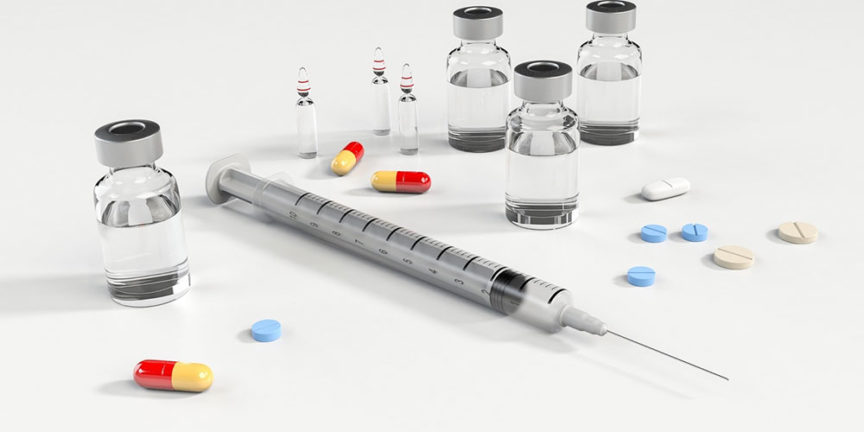
10 Drugs That Promote Violence
Violent behavior and victimization are common among individuals with substance abuse problems. Intoxication or withdrawal from certain drugs can promote violent behavior is some people. It is worth noting that while the pharmacological effects of certain drugs may contribute to aggression, there are several other factors that can play a role in increasing the risk for violence (e.g. committing violent crimes to get money to buy drugs, having a predisposition for aggression).
Here are some of the most common drugs that have been found to contribute to violent behavior during intoxication and/or withdrawal:
1. Anabolic Steroids
Anabolic steroids are synthetic or human-made, variations of the male sex hormone testosterone. Misuse of these drugs is often seen in some athletes in body builders who use it to try to boost their performance or improve their appearance.
The misuse of anabolic steroids has many detrimental health effects, among them is high risk for violent behavior during the intoxication period. People sometimes use the informal term “roid rage” to describe the increased irritability, anger and aggressive behavior that anabolic steroid users often present.
2. PCP (Phencyclidine)
This drug was developed in the 1950’s as a general anesthetic for surgery but is no longer use due to the serious side effects, which include a high risk for aggressive behavior, belligerence, impulsivity, unpredictability and bizarre behavior during intoxication. Some slang terms for this drug include “Angel Dust”, “Hog” and “Love Boat.”
3. Alcohol
An increased risk of aggression may occur when a person is either intoxicated with alcohol or experiencing withdrawal from it. Chronic alcoholism has been found to be particularly predictive of violence. Alcohol is also the substance most frequently implicated in homicide.
4. Cocaine
Cocaine is a powerfully addictive stimulant drug that poses an increased risk for aggression, agitation, impulsivity, psychosis and mania, among other symptoms. Symptoms such as impulsivity may remain even after several weeks of abstinence.
5. Amphetamines
Amphetamines are stimulants that are often prescribed to treat attention deficit disorder (ADD or ADHD) and narcolepsy. Adderal is the commercial name for this drug and some common street names include “Bennies”, “Speed” and “Uppers.”
This drug has a high abuse potential and a misusing them increases the risk for violence during intoxication. Long-term effects of amphetamine misuse also include psychosis, anger and paranoia.
6. Methamphetamine
Methamphetamine has been found to be the drug that most contributes to violent crime. This highly addictive stimulant can cause violent behavior, paranoia, hallucinations, anxiety and confusion, among other problems. Studies have found increased aggression during both intoxication and withdrawal. Continued use can cause serious and permanent neurological damage.
7. MDMA (Ecstasy)
3,4-Methylenedioxy-methamphetamine (MDMA), more commonly known as “Ecstasy” is a synthetic drug that is chemically similar to both stimulants and hallucinogens and alters mood and perception. It is often used recreationally among adolescents. Impulsivity, irritability, anxiety and aggression are some of the side effects of this drug.
- Amphetamine, methamphetamine and MDMA share a common chemistry but are not identical.
8. Opiates and Opioids
Opiates are naturally occurring chemical compounds typically derived from the resin of the opium poppy. Morphine and codeine, which have been used in medicine for their analgesic properties, are two examples of opiate drugs. On the other hand, the term “opioid” refers to a family of drugs that produces similar effects to opiates but can be either natural or synthetic.
Some opioid examples are the illegal drug heroin, and prescription opioids such as oxycodone, hydrocodone, methadone and fentanyl.
Both opiates and opioids are highly addictive and have been found to increase the risk for violent behavior, particularly during withdrawal. Research has also shown that heroin use is associated with increased aggression, impulsivity and suicide.
9. Cannabis (marijuana)
Although marijuana is frequently seen as a harmless drug, several studies have confirmed a link between cannabis use and aggressive behavior. Marijuana usually produces a relaxing and euphoric effect in users however, sometimes it can also cause anxiety, fear, distrust and acute psychosis. Such symptoms can lead to violent behavior during the intoxication phase.
Some studies have also found that regular cannabis users were almost twice as likely to be perpetrators of intimate partner aggression, and male cannabis users have been found to be more likely to perpetrate sexual aggression.
10. Sedatives (benzodiazepines)
Benzodiazepines are a type of prescription sedative commonly prescribed for the reduction of anxiety, agitation and sleeping problems. However, there’s growing evidence that they can increase aggressive behavior for some individuals during intoxication and withdrawal.
Some examples of benzodiazepines that have been linked to aggression are alprazolam (Xanax), triazolam (Halcion), and clonazepam (Klonopin).
